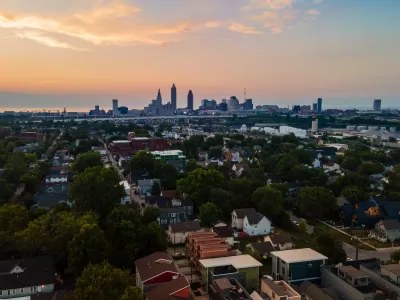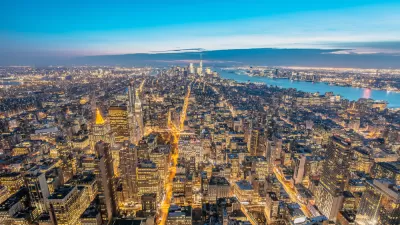If passed by the city council, the new form-based code will be piloted in four neighborhoods.

Cleveland’s planning commission approved new form-based code language and maps last week — after six years of planning and a decade of discussions. It marks the first fundamental change to the city’s zoning code since 1929. “The form-based code is a pilot project, an initiative funded by $275,000 in public money and grants,” reports Michelle Jarboe for News 5 Cleveland. If passed by the City Council,it will initially apply to four areas of the city, with the potential to expand citywide in the years to come.
Many Clevelanders have long considered the city’s current, traditional zoning code to be broken.
According to Jarboe, variances are routine, “whether someone’s adding a deck to a bungalow or building an apartment complex,” but navigating the approval process takes time, money, and knowledge, ultimately discouraging development. Officials hope the more straight-forward form-based code and simpler processes will encourage investment across the city and allow more city residents to establish home-based businesses, which current zoning laws discourage. The new form-based code will also allow more types of homes, including three- and four-unit projects, tiny houses, backyard apartments, and cluster homes, Jarboe reports.
Shannan Leonard, the chief city planner who led the code-reform effort, told News 5 Cleveland that the overall goal is to make zoning more digestible and to better reflect residents’ desires. “We really want to rely on more straightforward, 21st century language, as well as photos and graphics to kind of help people along … We want to be more equitable … We want to be more sustainable. We want to be healthier. And all of those things are wrapped up into zoning,” Leonard said.
FULL STORY: Cleveland Planning Commission OKs major zoning change after a decade of discussions

Study: Maui’s Plan to Convert Vacation Rentals to Long-Term Housing Could Cause Nearly $1 Billion Economic Loss
The plan would reduce visitor accommodation by 25,% resulting in 1,900 jobs lost.

North Texas Transit Leaders Tout Benefits of TOD for Growing Region
At a summit focused on transit-oriented development, policymakers discussed how North Texas’ expanded light rail system can serve as a tool for economic growth.

Using Old Oil and Gas Wells for Green Energy Storage
Penn State researchers have found that repurposing abandoned oil and gas wells for geothermal-assisted compressed-air energy storage can boost efficiency, reduce environmental risks, and support clean energy and job transitions.

Private Donations Propel Early Restoration of Palisades Playground
Los Angeles has secured over $1.3 million in private funding to restore the Pacific Palisades playground months ahead of schedule, creating a modern, accessible space that supports community healing after recent wildfires.

From Blight to Benefit: Early Results From California’s Equitable Cleanup Program
The Equitable Community Revitalization Grant (ECRG) program is reshaping brownfield redevelopment by prioritizing projects in low-income and environmental justice communities, emphasizing equity, transparency, and community benefits.

Planting Relief: Tackling Las Vegas Heat One Tree at a Time
Nevada Plants, a Las Vegas-based nonprofit, is combating the city’s extreme urban heat by giving away trees to residents in underserved neighborhoods, promoting shade, sustainability, and community health.
Urban Design for Planners 1: Software Tools
This six-course series explores essential urban design concepts using open source software and equips planners with the tools they need to participate fully in the urban design process.
Planning for Universal Design
Learn the tools for implementing Universal Design in planning regulations.
Ascent Environmental
Borough of Carlisle
Institute for Housing and Urban Development Studies (IHS)
City of Grandview
Harvard GSD Executive Education
Toledo-Lucas County Plan Commissions
Salt Lake City
NYU Wagner Graduate School of Public Service




























